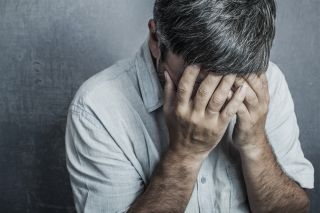
Relapse
Tips to Avoid Pain Recovery Relapse
The key to pain recovery is consistency
Posted May 1, 2015

I typically use the famous quote from W.L. Bateman, “if you keep on doing what you’ve always done, you’ll keep on getting what you’ve always got,” when patients come into treatment after having no success with methods of pain relief. Despite unsuccessful outcomes, patients try to convince my treatment team and me that they should continue using the medications they have been taking.
The key to pain recovery is consistency. Conversely, the road to relapse is inconsistency. Gyms around the country sell memberships that exceed their capacity based on the notion that commitment to exercise will eventually dwindle. Most people set out with the best intentions but lose their will to commit to consistent exercise over time. We see similar scenarios with chronic pain patients. Many patients are excellent starters but not very good maintainers. They seem to enjoy the sprint but not the marathon. If you take this approach with a gym membership you may lose some money, but if you do this with your recovery, the stakes can be quite grave.
The best advice I’ve ever heard regarding pain recovery came from a nurse practitioner I worked with at Johns Hopkins. She said “Do the same on a good day as you do on a bad day.” Often times patients with chronic pain exert themselves too much on a good day, end up overdoing it, and then require a few days off due to the pain. Then they feel bad about the lack of accomplishment on the days off, start to feel better and then repeat the cycle. This pattern of inconsistency sets them up for relapse. I encourage patients to set up a manageable schedule that they can handle on a good day or a bad day. Eventually patients learn that they – not the pain – have the power to control their lives. The goal is to learn to be in charge of your own life and not allow the pain to have that power.
Every chronic pain patient is different and therefore it’s important to maintain the treatments that are most helpful to you. This may include acupuncture, massage, yoga, physical therapy, aqua therapy, 12-step meetings, and/or meditation. Don’t stop doing what is working, even if you feel it may only be helping 5-10 percent. That percentage may be the tipping point.
It’s important that each patient identify his or her own relapse triggers and warning signs. Identify what activities or emotions increase your pain. You do not necessarily have to avoid these activities or emotions, but you may need to modify or plan for them. Also, what are your warning signs? Be aware of your body, mind and emotions. How are you feeling? These questions and check-ins can help prevent relapse.
Chronic pain is just that: chronic. Remember, if pain returns, it doesn’t mean “It’s back forever” or “It’s never going to improve.” These messages increase our anxiety, which increases our tension, which increases our pain. Everyone has days that are not great. The key is to just keep doing what works consistently.
One caveat: If the pain or emotion you experience is new, severe or of a different quality, please do not hesitate to see your doctor to be sure a more serious condition isn’t present that requires attention. Just because there is a chronic pain condition doesn’t mean acute problems don’t arise.

